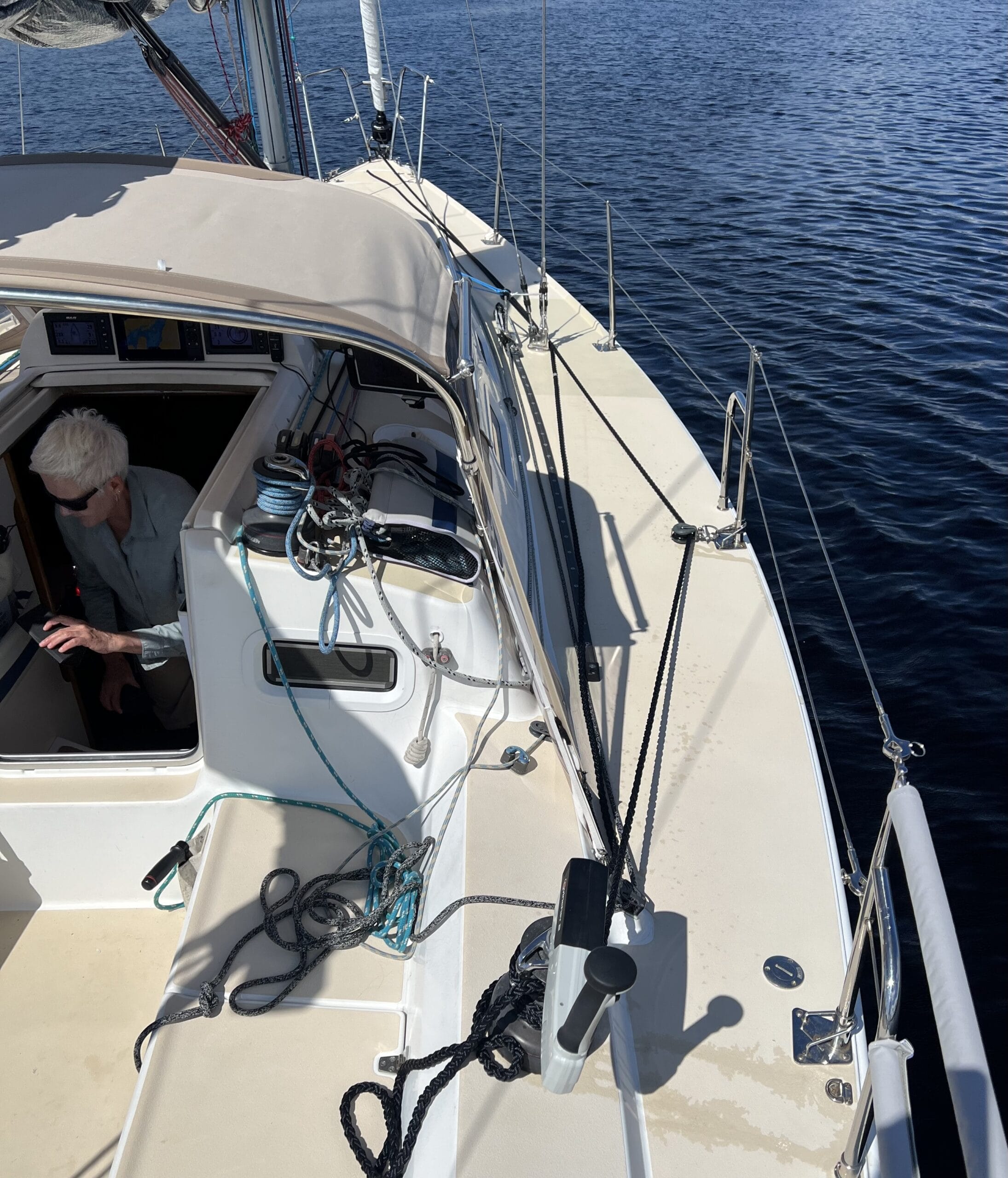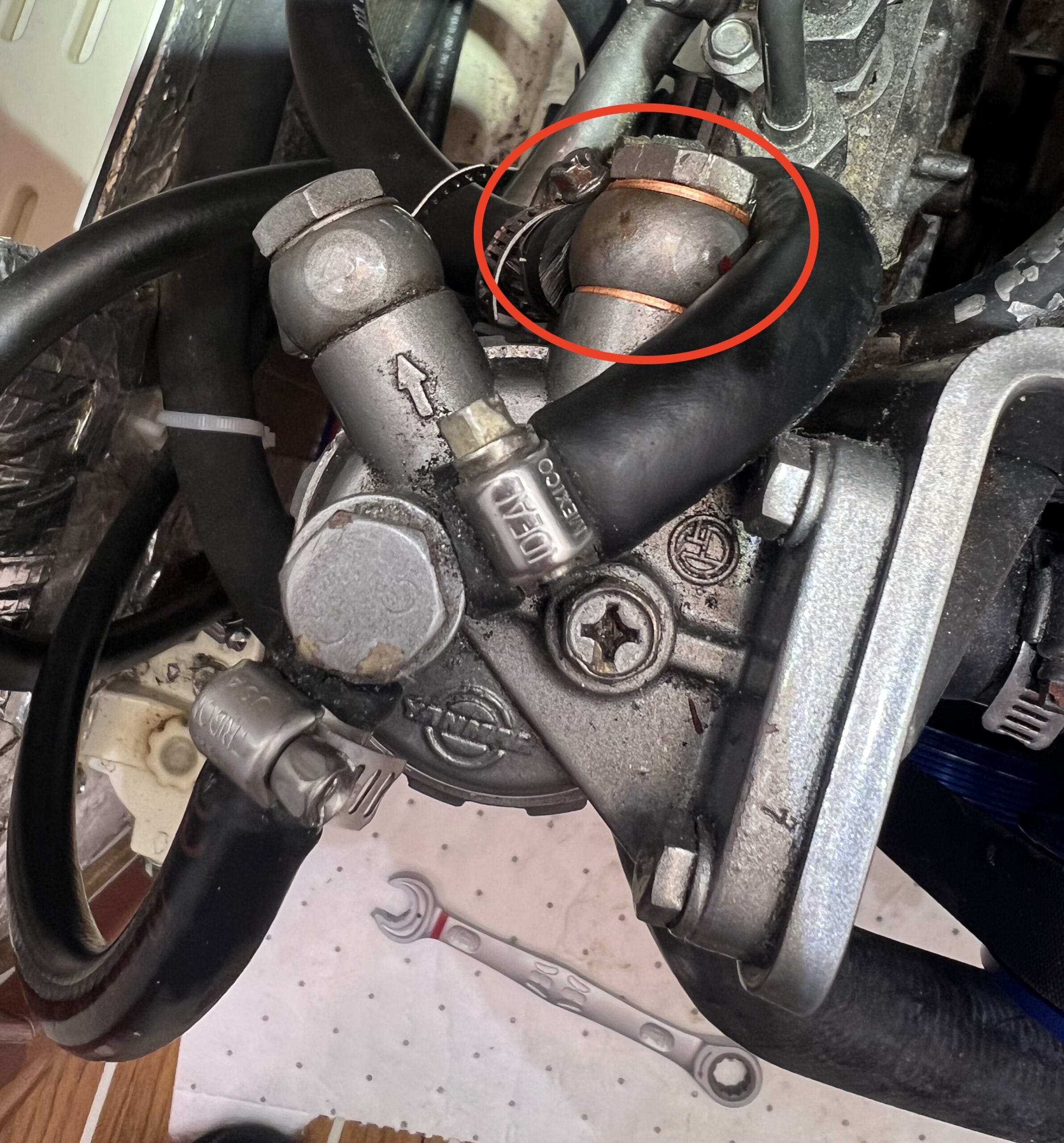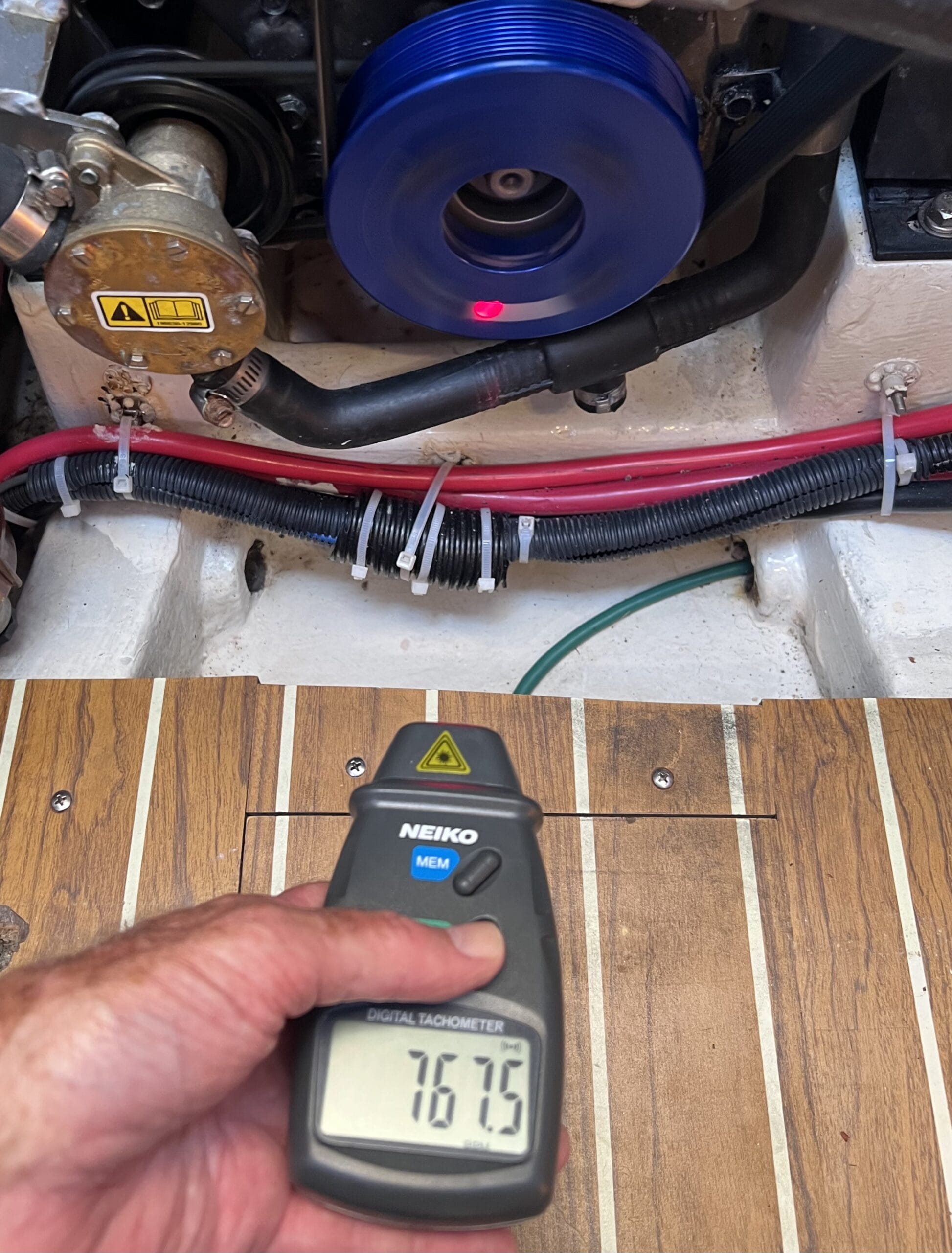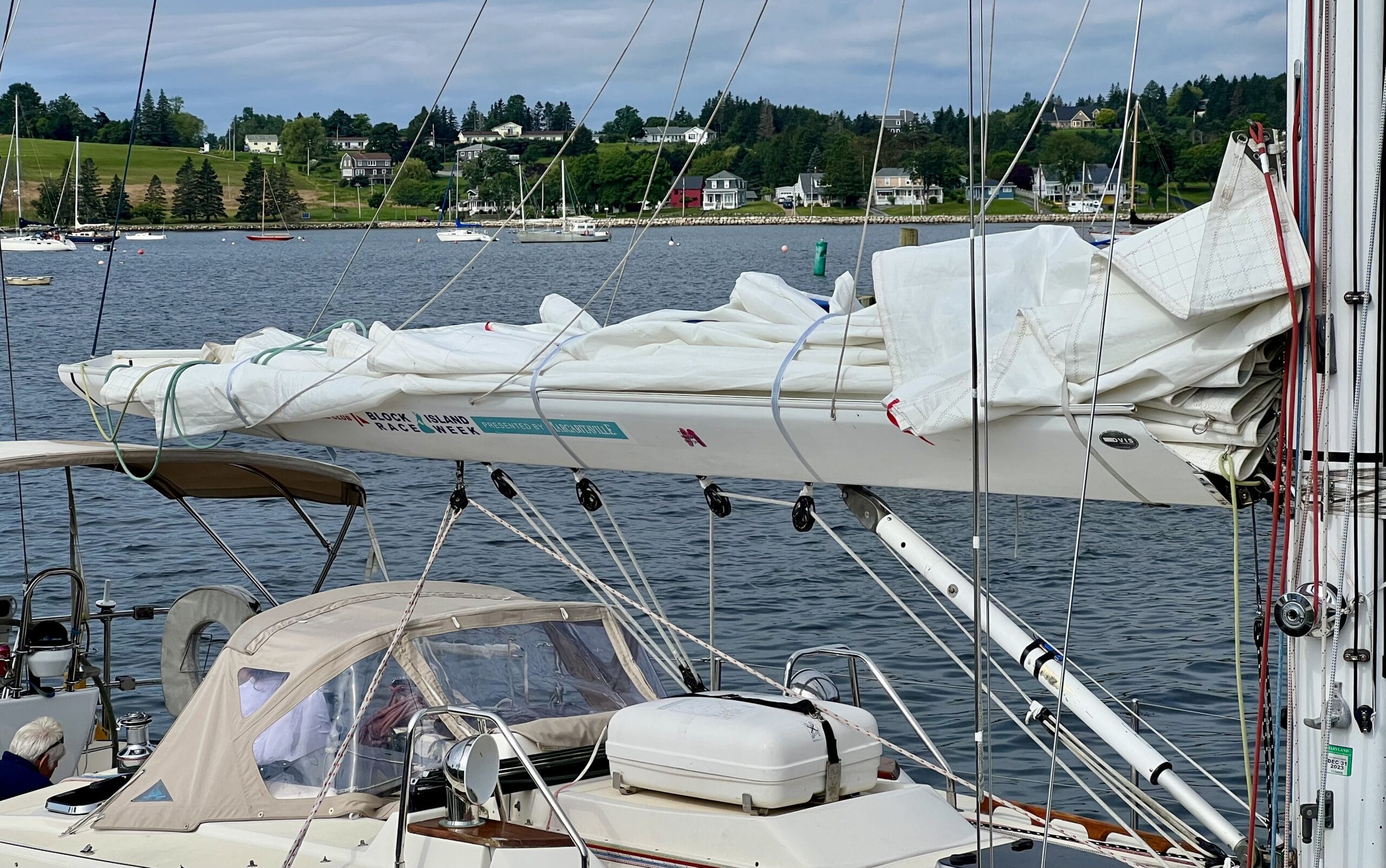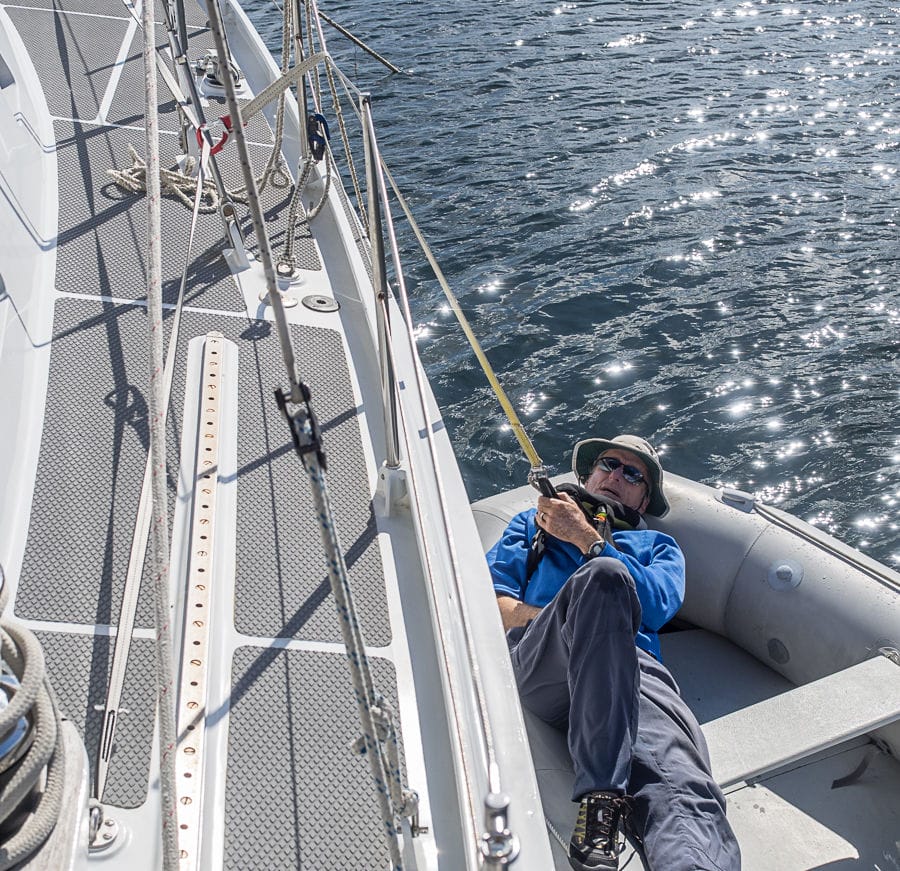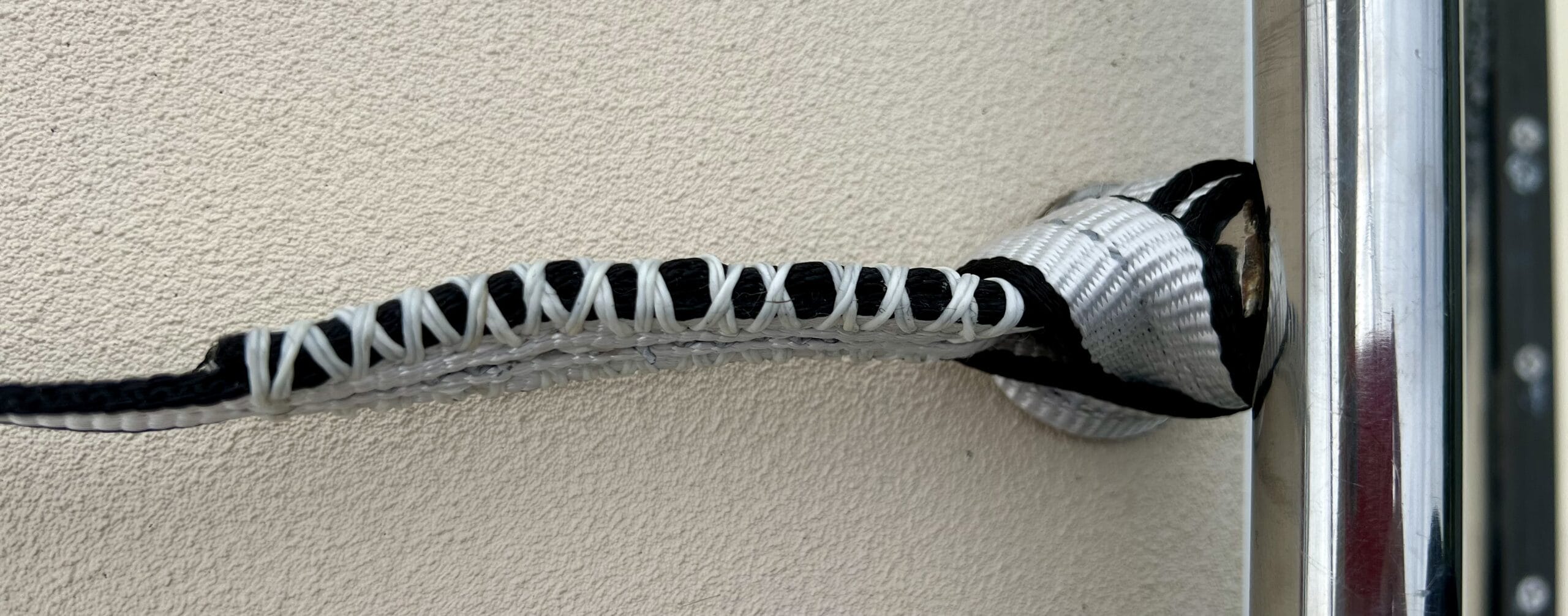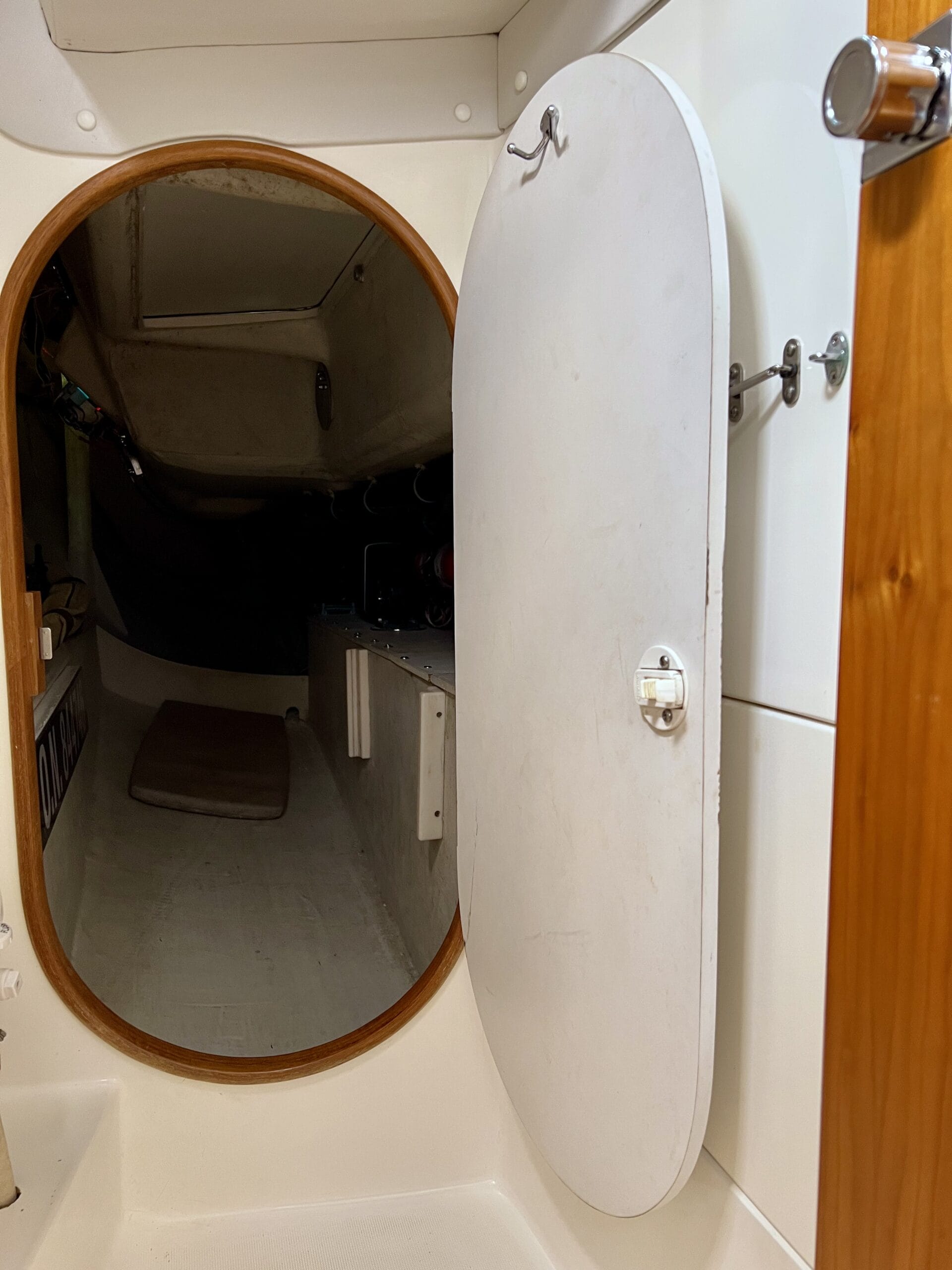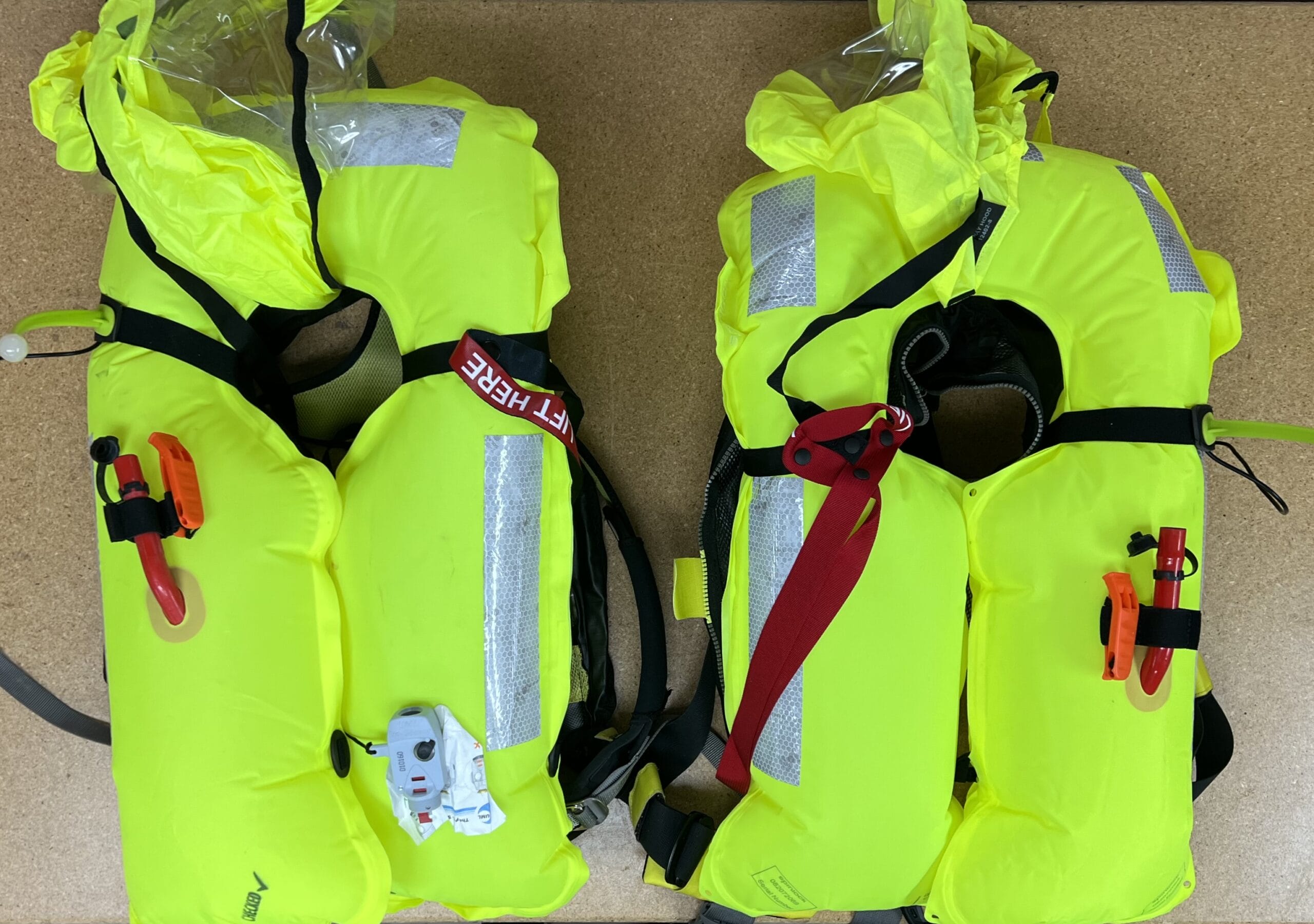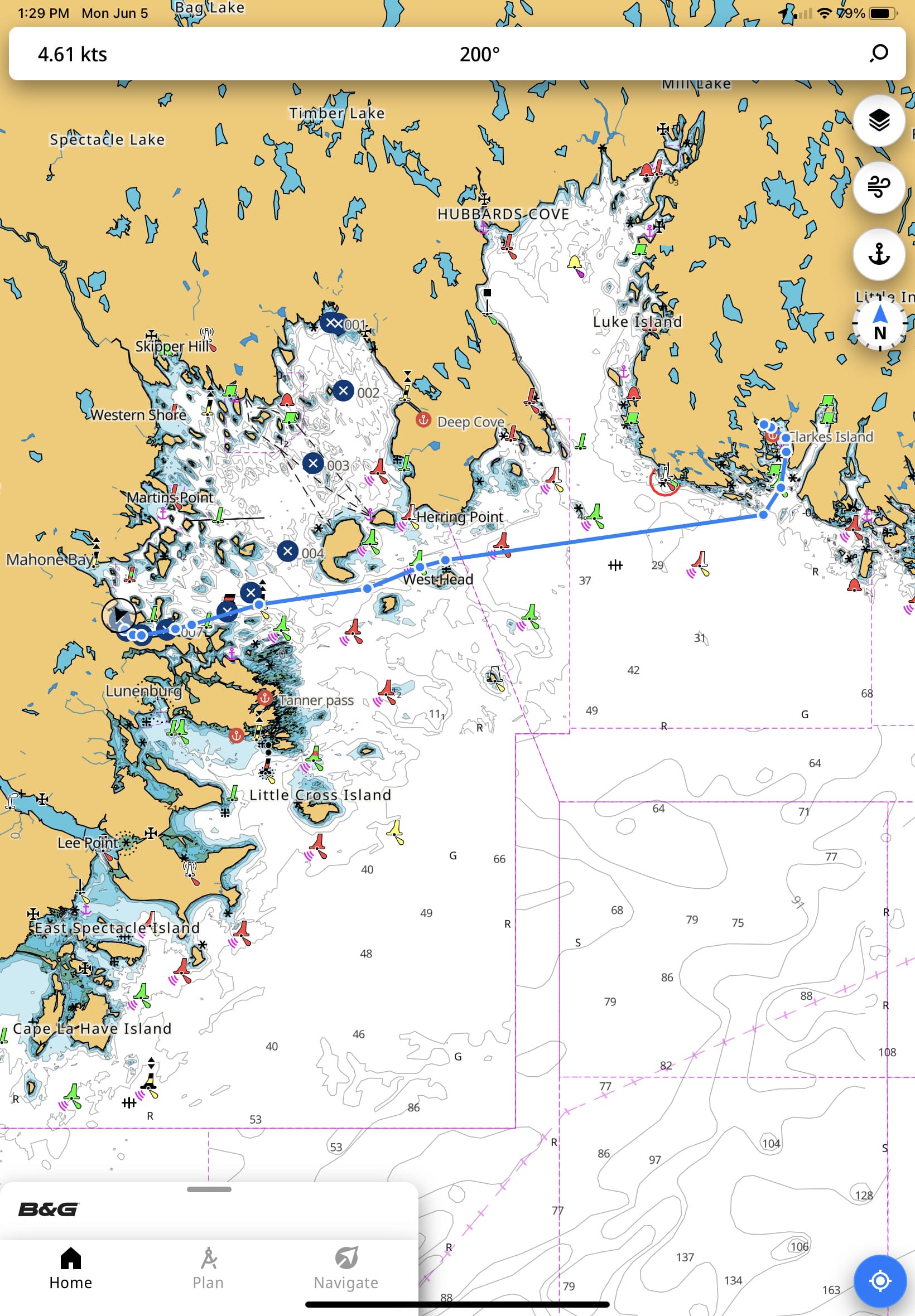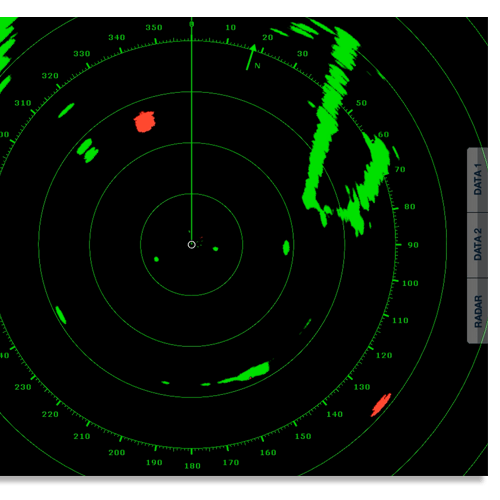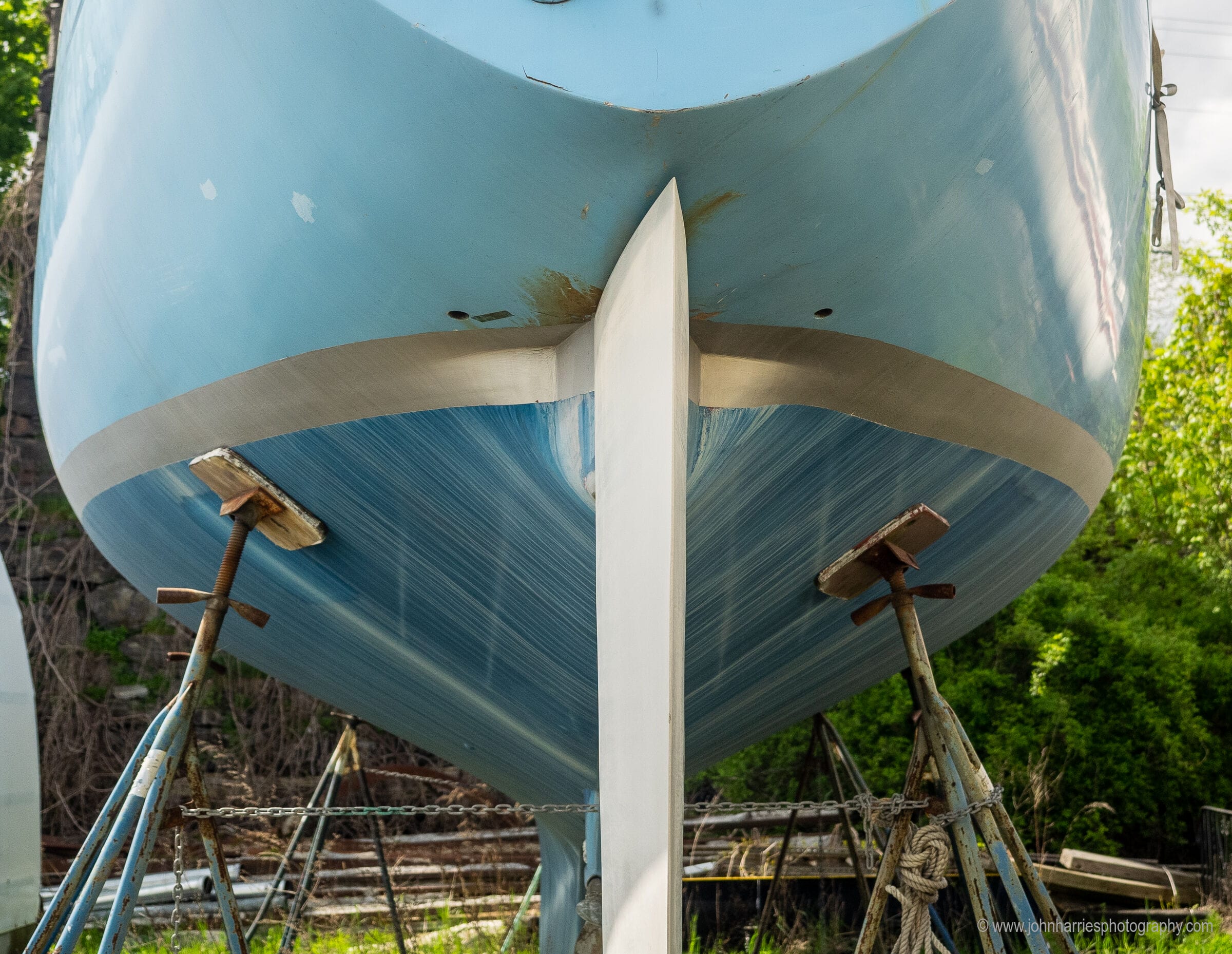
Tips, Tricks & Thoughts:
Tips
-
eWincher as a Windlass
5 CommentsReading Time: < 1 minuteFreeRead more: eWincher as a WindlassOur J/109 has a great anchor locker as well as a removable anchor roller, but no windlass, and there is no way in hell we are adding all that weight up forward on this boat. No worries. Our eWincher, driving a two-speed primary cockpit winch, hauls the rode as fast, or maybe a bit faster, […]
-
What It’s Really All About
0 CommentsReading Time: < 1 minuteFreeRead more: What It’s Really All AboutA beautiful full-moon-lit evening in a lovely anchorage rafted up with good friends for a fine dinner. Not a lot more to say, really.
-
Apple Watch Photo-Trigger Hack
2 CommentsReading Time: 2 minutesFreeRead more: Apple Watch Photo-Trigger HackI needed to get the model and serial number off the fridge unit on our J/109, but the problem is that the plate is on the far side and inaccessible, at least to an arthritic old fart. I was pondering using my borescope, but controlling it holding the wire would have been difficult. Then I […]
-
Good Fractional Rig-Tuning Article
1 CommentReading Time: < 1 minuteFreeRead more: Good Fractional Rig-Tuning ArticleWe have five detailed step-by-step chapters on how to tune a masthead rig, starting here, but we don’t cover fractional rigs because they are unusual in the offshore cruising world. But if you do have a fractional rig, like we do on our new-to-us J/109, there’s a good tuning article over at Practical Boat Owner. […]
-
Don’t Forget Weather Maps
9 CommentsReading Time: 2 minutesFreeRead more: Don’t Forget Weather MapsI have to confess that, now we are no longer cruising offshore, I have tended to get my weather information from Windy and call it good. But I just realized that that lazy approach was resulting in me losing the strategic and tactical feel for the weather I developed over some five decades of observing […]
-
The Most Dangerous Thing Offshore Cruisers Do
6 CommentsReading Time: 2 minutesFreeRead more: The Most Dangerous Thing Offshore Cruisers DoLast week I linked to a well-done report and some associated testing over at Practical Boat Owner that made a convincing argument that sidedeck jacklines are worse, at least when used with a standard 6′ long tether, than not clipping on at all, because of the risk of being killed by dragging. And then a […]
-
Carry Spare Banjo Fitting Washers
21 CommentsReading Time: < 1 minuteFreeRead more: Carry Spare Banjo Fitting WashersBanjo fittings are ubiquitous on engines (there are a lot of them around, too), usually in the fuel system, but the fresh water cooling circuit often has a few as well. And each of them has a small copper washer each side of the fitting that acts as a seal. Here’s the thing: the washers […]
-
Check Tachometer Accuracy
6 CommentsReading Time: 2 minutesFreeRead more: Check Tachometer AccuracyThere are all kinds of good reasons to check our engine RPM, including making sure: But the problem is that tachometers can drift into inaccuracy. And an even bigger problem is that if we change our alternator to a larger and more robust one, as many of us cruisers do, and most of us should, […]
-
V Booms a Great Idea
19 CommentsReading Time: 2 minutesFreeRead more: V Booms a Great IdeaPocket Boom, V Boom, Park Avenue Boom, it doesn’t much matter what we call them, these booms are a great idea that should be adopted by a lot more sailors than do. A great way to simplify sail handling, and make it easy to put on the sail cover, but without the complexity, weight, performance […]
-
Edson Radar Tower
1 CommentReading Time: < 1 minuteFreeRead more: Edson Radar TowerWe are really happy with the way our new radar installation came out, particularly the Edson tower. We have long felt that the best place for a radar is on a tower, not on the mast or backstay. It even inclines for when we are heeled in fog…yes, we get wind and fog here in […]
-
Take a Racer Sailing
0 CommentsReading Time: < 1 minuteFreeRead more: Take a Racer SailingI have long argued that one of the quickest ways to become a better cruiser is to go racing as crew. It also works the other way around. Brooke (on the left) owns and seriously races a J/109 on Narraganset Bay. So while she was visiting with our friend Ed, she came out sailing on […]
-
Sidedeck Jacklines Worse Than Nothing?
6 CommentsReading Time: < 1 minuteFreeRead more: Sidedeck Jacklines Worse Than Nothing?We at AAC have long argued that sidedeck jacklines (jackstays) are not safe because of drag risk. But PBO are taking that up a level by suggesting, based on some very sobering testing as well as even more sobering analysis of sailors falling overboard and being dragged by their tethers, that it might even be […]
-
Is Your Radio Talking to Your GPS?
5 CommentsReading Time: 2 minutesFreeRead more: Is Your Radio Talking to Your GPS?Even though I have been working on our new-to-us J/109 off and on for nearly two years, there are still chores on the to-do list, one being to program our new MMSI number into the VHF—I did our AIS transmitter as soon as we got the boat. Luckily for me, although disturbing to find out, […]
-
Bluetooth Autopilot Remote Rocks
2 CommentsReading Time: < 1 minuteFreeRead more: Bluetooth Autopilot Remote RocksGiven that, this remote control for our new B&G autopilot is invaluable and just generally adds to the fun. A couple of button presses will even make the boat tack automatically while I handle the sheets—beats heck out of steering with a foot while tacking. Highly recommended and way better than wired remotes or running […]
-
Pull Tackles Tight When Laying Up
2 CommentsReading Time: < 1 minuteFreeRead more: Pull Tackles Tight When Laying UpI have been doing this sailboat ownership thing for over 60 years and still I learn stuff, usually when something bites me on the ass. We were all set to bend on the main last week when the outhaul jammed solid. No way to pull it out to shackle it to the clew. When we […]
-
Neater Webbing Cow Hitches Hack
7 CommentsReading Time: < 1 minuteFreeRead more: Neater Webbing Cow Hitches HackIf we are sewing a loop into a piece of webbing to cow hitch it to something, as is often the case with jacklines, the end result will seat better and be way neater if we sew the loop with a half turn in it as shown below. More on making your own jacklines and […]
-
All Doors Should Latch Open
0 CommentsReading Time: < 1 minuteFreeRead more: All Doors Should Latch OpenThere are many little tricks that can make maintaining a cruising boat easier. One of them is that all doors should have hooks or latches to retain them open so that air circulates, and should be left that way as much as possible. This one change can cut mildew growth and general mustiness way back. […]
-
When Did Your Inflatable Lifejacket Last Feel The Love?
0 CommentsReading Time: < 1 minuteFreeRead more: When Did Your Inflatable Lifejacket Last Feel The Love?I have to confess that unpacking, test inflating (24 hours), and repacking lifejackets is one of my least favourite chores—getting them back together all nice and smooth with no lumps is just one of the many tasks I’m not naturally gifted at. But even so I just did all five of ours—two Spinlock Deckvest 6D […]
-
Buntline Hitch With Bury Splice Hack
5 CommentsReading Time: 2 minutesFreeRead more: Buntline Hitch With Bury Splice HackI was cleaning up the dog’s breakfast of frayed and knotted lines making up our jib in-haulers when I came up against the problem of how to attach the Amsteel™ line to the low-friction ring the sheet passes though. A Brummel splice was one possibility, but it’s difficult to get a splice snugged up really […]
-
When is Enough, Enough?
8 CommentsReading Time: < 1 minuteFreeRead more: When is Enough, Enough?“Enough” is realizing that the opposite—an insatiable appetite for more—will push you to the point of regret. Morgan Housel I have quoted this guy several times before. Even though he writes about investing and finance his thoughts are often relevant to life and cruising. A great thought to keep in mind when we are deciding […]
-
Pete Goss on Mainsail Automation
4 CommentsReading Time: < 1 minuteFreeRead more: Pete Goss on Mainsail AutomationSometimes I feel like a voice in the wilderness constantly campaigning for simple rigging systems, so it’s nice to read a well-reasoned article from a deeply experienced sailor on the subject. I spent a bit of time with Pete a few years ago, and he’s worth listening to, even if we disagree on a couple […]
-
A Required Skill to Go Voyaging
3 CommentsReading Time: < 1 minuteFreeRead more: A Required Skill to Go Voyaging“The capacity to tolerate minor discomfort is a superpower,” Oliver Burkeman wrote. “ It’s shocking to realize how readily we set aside even our greatest ambitions in life merely to avoid easily tolerable levels of unpleasantness. It is possible, instead, to make a game of gradually increasing your capacity for discomfort, like weight training at […]
-
Beware Auto-Tune on Modern Radars
0 CommentsReading Time: < 1 minuteFreeRead more: Beware Auto-Tune on Modern RadarsEngineer and experienced mariner Eric Klem has just updated his review of his Furuno DRS2D-NXT doppler radar with a sobering account of how the auto-tune feature failed during a night approach to a crowded harbour. Eric is an experienced radar user, and so was able to quickly diagnose the problem and fix it by taking […]
-
An Interesting Boat Decision—Buy or Walk?
10 CommentsReading Time: 2 minutesFreeRead more: An Interesting Boat Decision—Buy or Walk?Member Rob left an interesting comment a few days ago that got me thinking: I have a boat on offer and am considering backing out of the deal. The standing rigging is 41 year old rod, the rudder is wet, mold in v-berth, small leak in hull/deck joint, autohelm removed, small anchor locker (not sure […]

